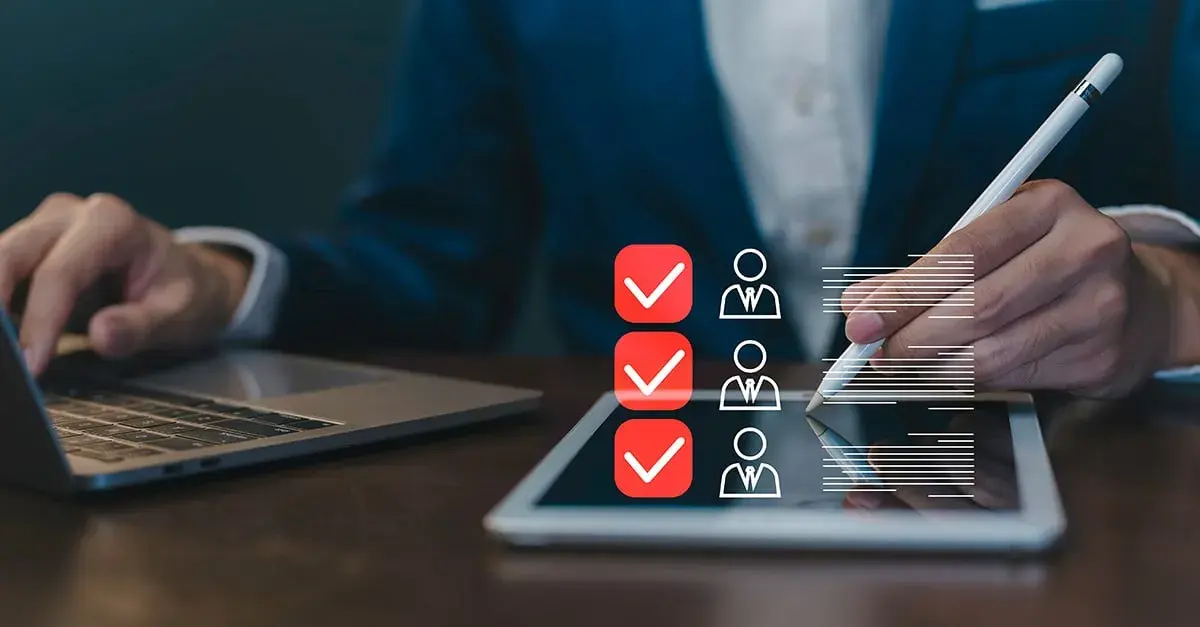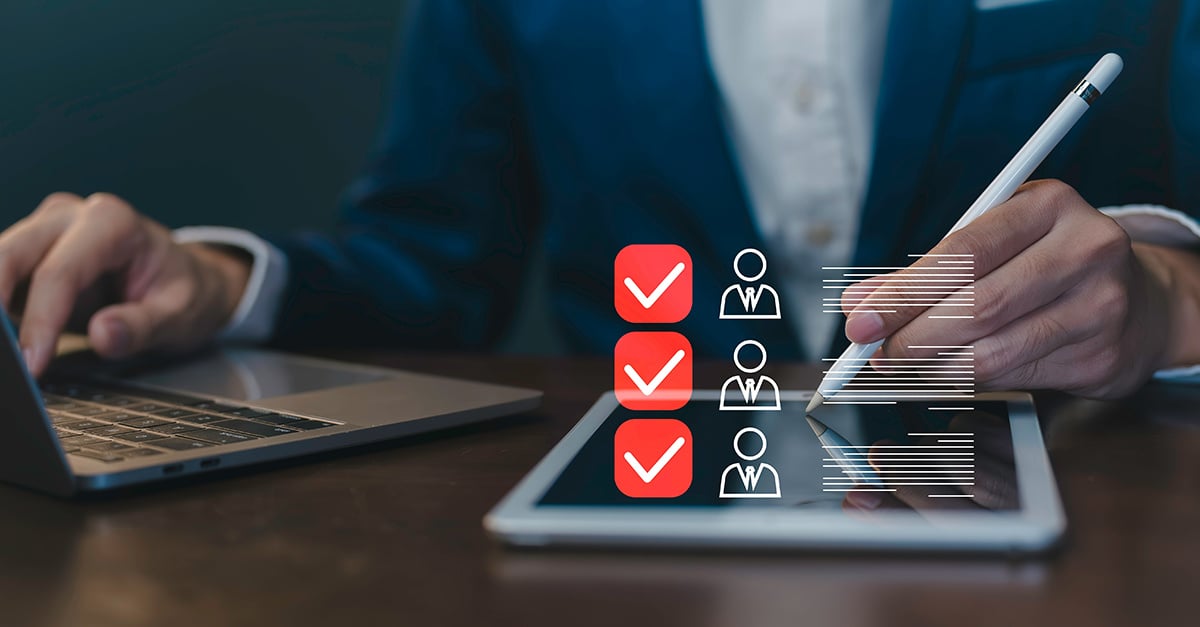Atlas Systems Named a Representative Vendor in 2025 Gartner® Market Guide for TPRM Technology Solutions → Read More

Practical Guide to Managing Risks in Your Supply Chain


22 min read | Last Updated: 02 Oct, 2025
According to Gartner, 89% of companies have experienced a supplier risk event in the past five years.
If you oversee supplier risk, procurement, or logistics operations, then you already understand how fragile supply continuity can be. One policy change, a port delay, or a raw material shortage can upend plans that seemed locked just days earlier.
These disruptions are no longer rare. They are part of the landscape, and they are showing up more frequently across industries. Yet, many teams are still caught off guard, reacting after delays begin instead of spotting the signals earlier.
That is where supply chain risk management becomes essential. When done right, it gives you the tools to detect risk patterns sooner, make faster decisions, and protect business flow across your supplier network.
This blog explains how supply chain risk management works, what risks matter most, and what practical steps you can take to build stronger control across your supply chain operations.
What is Supply Chain Risk Management (SCRM)?
When you are coordinating procurement or handling vendor logistics, you probably have seen how quickly a single issue, like a missed shipment or documentation delay, can disrupt downstream operations. These problems rarely stay contained, and they often pull teams into last-minute fixes that affect everything from timelines to customer confidence.
Supply chain risk management (SCRM) provides the structure to recognize those breakdown points early, before they escalate and impact other areas of your operation.
It is not just a fallback strategy. As defined in NIST SP 800-161, Supply Chain Risk Management Practices for Federal Information Systems and Organizations, SCRM is about identifying, assessing, and mitigating risks across the entire supplier lifecycle, ensuring that both technology and operational risks are addressed consistently.
Similarly, frameworks such as ISO 28000 (Specification for Security Management Systems for the Supply Chain) establish internationally recognized requirements for managing risks related to security, logistics, and regulatory obligations. These standards show that SCRM is not optional, it is a governance requirement for organizations that depend on multi-tier vendor networks.
Some of the areas where supply chain risks tend to emerge include:
- Gaps in third-party security controls, especially those connected to IT infrastructure or data access
- Delays caused by logistics providers or customs handling
- Financial distress among high-volume vendors
- Regulatory or political shifts in supplier jurisdictions
- Regional weather disruptions, public health crises, or infrastructure damage that slow down logistics or affect supplier regions
By building visibility into these pressure points, your team can prevent cascading failures and maintain stronger operational control across departments.
Importance of Risk Management in Supply Chains
If you have ever had to explain a delayed shipment to an executive team or reroute orders due to a last-minute supplier issue, then you already know how quickly supply chain risks can throw off business operations. What used to be considered rare disruptions: labor disputes, export restrictions, missed compliance filings, now show up with regularity.
Here is what a consistent risk management process allows you to do:
- Spot problems before they grow
Instead of reacting to shipment delays or vendor non-performance, you get the data and early signals needed to take corrective action in time. - Stay compliant across different regions
Working with suppliers across multiple countries means juggling diverse regulations. A solid risk lens helps you avoid oversights that could trigger penalties. - Keep your operations steady during external shocks
From cyber incidents to sudden route closures, supply chain risk controls help you respond faster without disrupting customer expectations. - Protect how your brand is perceived
A missed delivery may look small internally, but externally, it can mean lost clients or contract disputes. Preventing these issues upfront preserves trust. - Clarify vendor accountability
With visibility into supplier tiers and escalation paths, you avoid guesswork when something breaks. That clarity matters under pressure.
Types of Supply Chain Risks
No supply chain is immune to disruption. What separates prepared organizations from exposed ones is their ability to recognize where the biggest risks come from and how those risks evolve over time. Based on industry standards (including NIST and ISO guidance) and our work with enterprise procurement and compliance teams, here are the core categories you need to monitor:
Operational risks
Issues that interfere with day-to-day supply activity. These can include:
- Delayed or incomplete shipments
- Manufacturing errors or quality lapses
- Misaligned inventory or order fulfillment systems
- Gaps in supplier capacity or capability
Financial risks
These often show up in supplier viability and market volatility:
- Vendor insolvency or poor credit standing
- Currency fluctuation impacting cross-border contracts
- Sudden changes in pricing models or terms of service
- Missed payment cycles leading to strained vendor relations
Cyber and data risks
Especially relevant for suppliers with access to your systems or customer data:
- Breaches tied to third-party access
- Insecure vendor platforms used for order management or tracking
- Data compliance violations under regulations like GDPR or HIPAA
- Shadow IT is used by remote teams without approval
Geopolitical risks
Often harder to predict but critical to track:
- Trade restrictions, sanctions, or import bans
- Political unrest in sourcing or transit regions
- Regulatory shifts that alter sourcing feasibility
- Cross-border disputes that impact customs or clearance timelines
Environmental and external risks
Factors beyond internal control but not beyond planning:
- Natural disasters like earthquakes, floods, or hurricanes
- Global events like pandemics or civil unrest
- Industrial accidents or hazardous material delays
- Climate-related disruptions to logistics or production
Each risk type carries its own signals. The stronger your system is at detecting these early, the better equipped your team will be to respond, with less disruption and more control.
Supply Chain Risk Management Process
If your organization handles multiple vendors, touchpoints, or international logistics, a fragmented approach to risk simply will not work. What you need is a clear process, not just a concept, that helps you stay ahead of disruptions rather than reacting after damage is done.
Here is a structured supply chain risk management process we have seen work well across sectors like healthcare, manufacturing, and regulated industries:
1. Identify internal and external risks
Begin by mapping the full network of entities and transactions. This includes:
- Primary and secondary suppliers
- Contract manufacturers
- Logistics providers and freight forwarders
- Regulatory bodies or customs dependencies
At this stage, involve both procurement and compliance teams to capture blind spots early.
2. Classify risks by severity and likelihood
Not all risks deserve equal attention. Group them into tiers based on:
- The potential business impact if a disruption occurs
- The probability of that event happening in your specific context
- Any past signals or historical trends that inform this rating
This helps you avoid over-planning for unlikely events while missing the ones that are quietly building.
3. Map your supply chain dependencies
Use visual workflows or dependency trees to understand:
- Which suppliers feed into which product lines
- Where single points of failure exist
- How delays at one node impact others down the chain
This step is key if you plan to introduce automation or tiered risk scoring later.
4. Assign ownership and accountability
Risk tracking often breaks down when no one is clearly responsible. You need:
- Defined roles for who monitors each supplier or contract
- Escalation paths if disruptions emerge
- Internal SLAs for follow-up and review timelines
5. Implement controls and contingency plans
Once the high-risk areas are clear, introduce guardrails:
- Backup suppliers for Tier 1 and Tier 2 categories
- Flexible contracts that allow for rerouting or substitutions
- Cybersecurity access limits and offboarding policies for third parties
6. Continuously monitor and reassess
Your risk map should not stay static. Build in:
- Quarterly reviews at a minimum, or more frequently if markets shift
- Automated alerts tied to delivery failures, financial red flags, or compliance gaps
- Vendor scorecards that evolve based on performance or changes in ownership
This process is what helps you move beyond a reactive model into something operational and measurable. If done right, your team will not just spot risks faster, but you will respond with clarity, not confusion.
Strategies for Effective Risk Management
This section lays out practical strategies used by experienced supply chain, procurement, and risk leaders, especially in sectors where continuity is non-negotiable.
1. Map supplier criticality before evaluating risk
Start by asking: Which of our vendors, if disrupted, would stall our operations within 24–72 hours?
This helps you distinguish between vendors that are critical to core functions and those that are more easily replaced. Once you establish that, your risk efforts can be directed where they matter most, instead of applying blanket controls across the board.
What to do:
- Classify vendors into tiers based on business impact
- Identify single points of failure in sourcing, transport, or dependencies
- Evaluate contract flexibility and lead times for each category
2. Diversify beyond cost-focused sourcing
Low-cost suppliers often come with hidden risks: longer lead times, limited flexibility, or geopolitical exposure. If a single-country sourcing strategy leaves you vulnerable, diversification is no longer optional.
What to do:
- Avoid clustering critical suppliers in a single region
- Identify alternate sources for key raw materials or components
- Build localized sourcing options for high-demand SKUs or regulated items
- Set procurement policies that weigh risk alongside cost
3. Build a structured vendor onboarding and screening
Risk management starts before a vendor is added to your system. Inconsistent onboarding processes can lead to contracts with poorly vetted suppliers or compliance oversights that surface too late.
What to do:
- Standardize onboarding with a checklist for financial health, compliance, and cybersecurity posture
- Conduct inherent risk scoring before contract execution
- Require data-sharing policies and third-party audit disclosures where relevant
- Use a centralized onboarding portal that aligns with your internal controls
4. Segment risks by vendor type and service level
A logistics partner operating across borders presents different risk patterns than a software vendor or a packaging provider. Segmenting risks by vendor role and the nature of services helps avoid overgeneralization.
What to do:
- Profile vendors based on function: direct materials, logistics, IT services, facilities, etc.
- Tailor risk categories: e.g., freight disruption for 3PLs, breach exposure for SaaS provider.
- Define SLAs and escalation protocols that match vendor tier and risk level
5. Monitor performance using real-world signals, not just dashboards
Standard dashboards alone do not always reflect what is happening on the ground. Early warning signs often show up in real-world behaviors: missed delivery dates, inconsistent invoice submissions, dropped communication, or leadership turnover.
What to do:
- Track delivery, quality, and responsiveness metrics over time
- Use internal incident reports and stakeholder feedback as qualitative indicators
- Integrate performance signals into quarterly risk reviews
- Set thresholds that trigger follow-ups or re-scoring
6. Automate where human tracking falls short
Manual tracking has its limits, especially when managing hundreds of suppliers across countries or categories. Automation improves visibility and speeds up reaction time, but only when paired with the right inputs.
What to do:
- Use risk scoring tools to assign risk profiles and update them continuously
- Integrate third-party monitoring feeds (e.g., geopolitical alerts, credit risk updates, supplier news)
- Set up alerts for when certain KPIs fall below acceptable thresholds
- Use machine learning to detect risk patterns from historical supply chain data
7. Establish escalation paths and risk response playbooks
Even the best risk strategies fail if people do not know what to do when a disruption occurs. Clear escalation paths ensure that issues are flagged to the right teams, fast.
What to do:
- Define who owns each vendor relationship from a risk standpoint
- Pre-build response playbooks for different scenarios: supplier breach, customs hold, transport strike
- Ensure that legal, finance, and operations teams are looped into response protocols
- Run simulations or tabletop exercises to test decision-making speed and coordination
These strategies do not eliminate risk, but they do make your supply chain more resilient, responsive, and easier to manage under stress. And when combined with the right tooling, governance, and team alignment, they let you turn risk management into a business capability, not just a compliance checkbox.
Technology and Tools in Supply Chain Risk Management (SCRM)
Supply chain risk management is no longer a manual exercise. With global operations, tighter compliance expectations, and third-party dependencies, technology has become an essential layer in making risk visible, measurable, and actionable.
If you are managing hundreds of suppliers or operating across regulatory environments, relying solely on spreadsheets or fragmented systems will limit your visibility and delay your response.
Here are the core technology categories that help organizations improve supply chain risk control:
1. Risk scoring and supplier profiling platforms
These platforms allow you to assign and update risk ratings based on a range of attributes, from financial health and cybersecurity maturity to operational history and contractual obligations.
What they enable:
- Vendor segmentation based on inherent risk
- Tiered due diligence processes
- Real-time re-scoring based on new data or events
- Visual dashboards to track supplier exposure across the chain
Example:
Atlas Systems' ComplyScore® enables organizations to automate risk scoring across third-party vendors and track changes in real time using customizable parameters. You can build a scoring model that reflects your industry, compliance needs, and operating scale.
2. Real-time supply chain monitoring systems
These tools track global conditions and alert teams to potential disruptions in transport, production, or regional stability. Instead of reacting to delays after they occur, you can get ahead of issues.
What they enable:
- Monitoring of ports, shipping lanes, and customs flows
- Updates on strikes, policy shifts, or natural disasters
- Live insights into material availability or freight bottlenecks
- Integration with internal systems to trigger mitigation workflows
Example:
Platforms like Resilience360, GeoQuant, and RiskPulse offer real-time tracking of geopolitical and environmental risks, and are especially valuable in industries with heavy international exposure.
3. AI-based analytics and anomaly detection
Machine learning tools can analyze historical and real-time data to flag anomalies that may indicate upcoming supplier or logistics issues before they become visible through traditional reports.
What they enable:
- Early warnings from supplier behavior (missed SLAs, delayed invoicing)
- Pattern detection across supplier tiers
- Fraud detection and compliance deviation signals
- Forecasting for delays based on historical trends and external events
Note:
These tools are most effective when paired with a mature data environment and structured feedback loops from internal teams.
4. Supplier collaboration portals
A centralized portal lets you share updates, collect documents, and communicate directly with vendors, removing the need for scattered email threads and version control headaches.
What they enable:
- Real-time document sharing and version tracking
- Integrated assessments (e.g., security, sustainability, compliance)
- Streamlined onboarding and policy distribution
- Greater transparency and accountability
Example:
Atlas Systems supports customized portals as part of its vendor governance solutions, including features that track SLA compliance, document submissions, and continuous assessments within a unified view.
The value of these tools is not just in automation, it is in enabling better decisions, faster responses, and clearer accountability. When implemented well, technology reduces noise, surfaces real threats early, and gives procurement and risk leaders the clarity to act.
Examples of Supply Chain Risk Management (SCRM)a
Seeing how organizations apply supply chain risk management in real scenarios can help clarify what works and why. Below are specific examples that show how early intervention, structured risk programs, and visibility tools have helped companies avoid serious disruptions.
1. A pharmaceutical firm restructures its sourcing strategy
According to EY, a major pharmaceutical company identified that depending on a single overseas supplier for critical ingredients left it vulnerable to border closures and regulatory delays. To lower that risk, the firm mapped supplier dependencies across production lines and introduced secondary sourcing options. This reallocation effort improved continuity and helped them stay aligned with regulatory obligations even during cross-border disruptions.
Key takeaway: Mapping dependencies and diversifying suppliers early can prevent a regulatory or logistical bottleneck from escalating into a full-scale disruption, especially in highly regulated industries like pharma.
2. Evonik tightened supplier risk planning with digital tools
Evonik Industries, a Germany-based specialty chemicals firm, faced increasing complexity in tracking risks across its global supplier network. To improve visibility and accountability, the company introduced risk modeling tools that integrated real-time data into their planning cycle. This allowed their procurement and compliance teams to flag issues early, such as recurring delivery delays and regulatory mismatches, before they impacted downstream operations.
By embedding risk analysis into supplier evaluations, Evonik avoided disruption in several high-dependency segments and kept production timelines on track.
Key takeaway: Integrating risk modeling into procurement decisions can help teams spot trouble earlier and maintain supply chain continuity without relying on reactive strategies.
3. Retail and pharma adopt AI dashboards
IBM notes that retailers and pharmaceutical companies are increasingly using AI-enabled dashboards and predictive analytics to track disruptions in real time. These tools flag issues such as supplier slowdowns, regional instability, or port congestion before they affect inventory levels or patient supply chains.
Key takeaway: Predictive analytics and AI dashboards provide a forward-looking lens, giving organizations time to adjust before disruptions spread.
These examples illustrate that supply chain risk management is not just about control — it is about preparedness. When organizations use structured risk processes, they reduce reaction time and avoid decisions made in panic. More importantly, they protect customer trust, regulatory standing, and financial performance.
Supply Chain Risk Management (SCRM) processBest Practices for Supply Chain Risk Management (SCRM)
A successful supply chain risk management (SCRM) program requires more than reacting to disruptions, it requires a defined process that helps your team detect, assess, and respond to risk with consistency.
Here is a step-by-step breakdown of what a practical SCRM process should look like:
1. Identify internal and external risks
Start by mapping out all the possible sources of disruption. This includes:
- Internal risks: operational bottlenecks, capacity issues, compliance gaps
- External risks: supplier failures, logistics delays, cyber incidents, political unrest, weather events
You should also review upstream and downstream partners because risks often emerge from Tier 2 or Tier 3 suppliers that are not part of your immediate oversight.
2. Classify risks by severity and likelihood
Once risks are identified, assign each one a rating based on two dimensions:
- Severity — how much damage it could cause to operations, revenue, or reputation
- Likelihood — how probable it is to occur, based on historical data and current signals
This helps focus attention on the most impactful threats and avoid chasing low-risk noise.
3. Map supply chain dependencies
Build a visual or structured inventory of:
- All suppliers, categorized by tier and business function
- Logistics routes and warehousing nodes
- Critical single-source vendors or transport paths
This mapping reveals where your dependencies are concentrated and where a disruption would ripple the hardest.
4. Assign ownership and accountability
Define roles for who will:
- Monitor risks and indicators
- Own mitigation planning for each major risk type
- Escalate decisions when thresholds are breached
- Update documentation and compliance reporting
Lack of ownership is a common reason risk programs fail to deliver results.
5. Implement controls and contingency plans
Develop specific risk mitigation actions for high-priority items. These may include:
- Alternate sourcing contracts or backup vendors
- Secondary logistics routes and local warehousing options
- Technical controls for third-party access to systems
- Pre-written response playbooks for common scenarios (e.g., cyber breach, supplier insolvency)
6. Continuously monitor and reassess
Risk profiles change. Your monitoring process should include:
- Live metrics from supplier systems and external data feeds
- Periodic reassessments (e.g., quarterly or triggered by incidents)
- Automated alerts tied to key performance indicators or risk thresholds
- Structured feedback loops from procurement, legal, and security teams
A mature risk management process is not built overnight, but each of these steps brings clarity, speed, and structure to how your organization navigates supply disruptions. Over time, this reduces guesswork and allows teams to act before risks escalate into losses.
Best Practices for Supply Chain Risk Management (SCRM)
If you are working in procurement, compliance, or supply operations, you know risk can never be eliminated entirely. But applying a set of consistent, field-tested practices can help reduce exposure and improve how your team responds when something does go wrong.
Below are best practices followed by organizations that have made supply chain risk management a working system, not just a concept:
Maintain a complete supplier inventory
Document all direct and indirect suppliers, not just Tier 1, with clear risk categorization and criticality scoring.
Perform due diligence before onboarding
Go beyond credit scores. Review vendor financial stability, cybersecurity posture, regulatory compliance history, and any subcontractor exposure.
Define clear risk ownership internally
Assign accountability for monitoring, reassessment, and escalation across procurement, legal, security, and operations.
Establish regular supplier audits
Use scheduled reviews to validate performance metrics, control effectiveness, and risk posture, especially for strategic suppliers.
Keep approved backup suppliers in place
Have vetted alternatives ready for critical categories, with pre-negotiated contracts if possible. This reduces downtime during emergencies.
Automate risk monitoring wherever possible
Integrate tools that track delivery performance, financial indicators, cyber risk scores, or geopolitical alerts into your supplier management platform.
Use tiered risk scoring for suppliers
Not all vendors need the same level of scrutiny. Use structured scoring models to tier suppliers and apply controls accordingly.
Train procurement and sourcing teams in risk awareness
Many disruptions are avoidable if early signs are flagged. Equip frontline teams to recognize red flags and trigger the right workflows.
Build escalation protocols into response plans
Ensure everyone knows what to do and who to contact when risks move from potential to active. Clear protocols reduce confusion during critical moments.
Update your risk plans regularly
Market conditions, political climates, and supplier portfolios change. Make risk reviews part of your quarterly strategy checkpoints.
Challenges in Supply Chain Risk Management (SCRM)
Even with the best tools and processes, supply chain risk management often runs into operational barriers. These challenges are common across industries and can delay risk response or dilute its impact. Here are some of the most persistent obstacles and how organizations can address them.
1. Limited visibility across supplier tiers
The challenge: Many companies only track Tier 1 vendors. Risks deeper in the supply chain often go unnoticed until a disruption occurs.
What helps:
- Build a layered supplier map that includes Tier 2 and 3 partners
- Use third-party data providers to enrich visibility
- Require subcontractor disclosures during onboarding
2. Inconsistent or incomplete risk data
The challenge: Teams often rely on outdated or fragmented risk profiles or skip risk scoring altogether due to time constraints.
What helps:
- Standardize data fields across supplier risk assessments
- Integrate external feeds (e.g., financial, cyber, geopolitical) into dashboards
- Set periodic reassessment schedules by risk tier
3. Supplier non-compliance with controls
The challenge: Even when policies are in place, suppliers may not follow required protocols, especially around data protection or operational standards.
What helps:
- Add performance-based risk clauses into contracts
- Use third-party audits or self-attestation workflows
- Remove or tier down noncompliant vendors during reviews
4. Reactive instead of proactive risk posture
The challenge: Risk often gets attention only after an incident. This reactive model leads to fire drills rather than controlled responses.
What helps:
- Use live indicators and threshold alerts tied to supplier performance
- Pre-build response protocols for top risk types
- Conduct tabletop exercises with internal teams to test readiness
5. Data silos between departments
The challenge: Procurement, legal, security, and operations often operate in isolation, with no shared platform to exchange risk insights.
What helps:
- Centralize vendor risk data into one platform (e.g., Atlas Systems’ ComplyScore®)
- Establish cross-functional risk committees
- Build escalation playbooks that route alerts across departments
Addressing these challenges does not require a complete overhaul. Most improvements come from coordination, automation, and clarity, making it easier for teams to act early and stay aligned.
Close the Gaps in Your Vendor Risk Program
Supply chains don’t break quietly. They strain, signal, and then snap, usually when the stakes are highest. The difference between scrambling to recover and calmly shifting course comes down to how well you track risk, how clearly roles are defined, and how fast your data turns into decisions.
That’s where Atlas Systems steps in.
With ComplyScore®, Atlas Systems delivers a purpose-built solution to manage third-party and operational risk across complex supplier networks. It’s not a dashboard for show, it’s a workflow engine that aligns your vendors, audits, compliance milestones, and risk thresholds in one unified view. From tiered onboarding to real-time scoring and escalation tracking, the platform is designed for teams who manage risk before it becomes fallout.
Risk clarity is possible. Let us show you how to turn insight into resilience, supplier by supplier.
FAQs on Supply Chain Risk Management (SCRM)
1. How often should supply chain risks be reviewed?
At a minimum, review your supply chain risks every quarter. If something shifts, like a key supplier’s financial health or new trade restrictions, do it sooner.
2. What can small businesses do to manage supply chain risk?
Keep it simple. Map out your top suppliers, flag the ones you depend on most, and build in backup options. Use low-lift tools to track changes and reduce guesswork.
3. How do you improve visibility across the supply chain?
Use tools that let you see what your suppliers are doing in real time. This includes delivery issues, region-specific alerts, and operational slowdowns.
4. What should you ask suppliers during risk evaluations?
- How do you handle service disruptions?
- What cybersecurity controls are in place?
- Who else do you rely on to deliver your services?
- What risks have you faced in the last year?
.png?width=869&height=597&name=image%20(5).png)

.png?width=300&height=175&name=Rectangle%2034624433%20(2).png)








.png?width=645&height=667&name=Widgets%20(2).png)











.webp)

.png)













